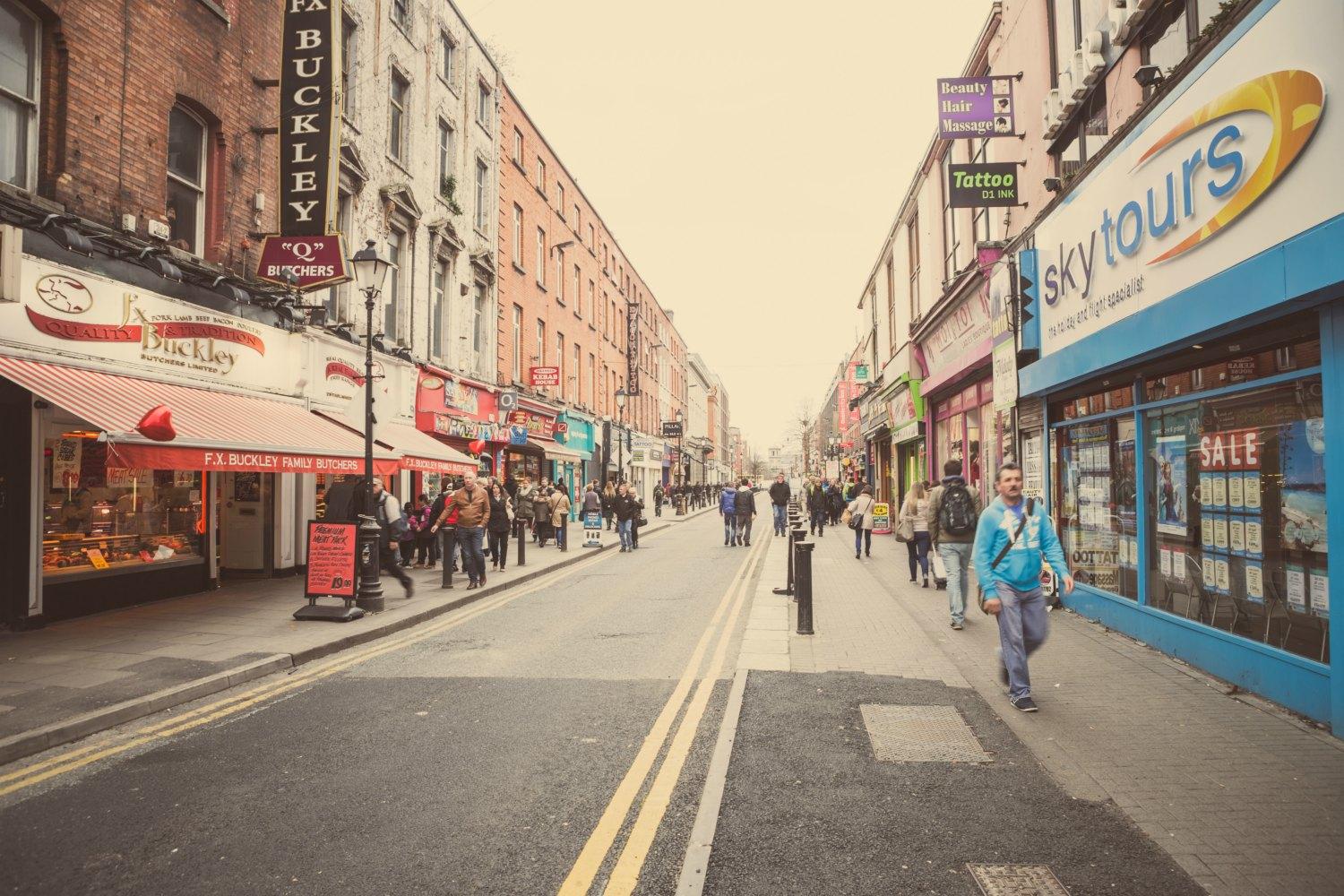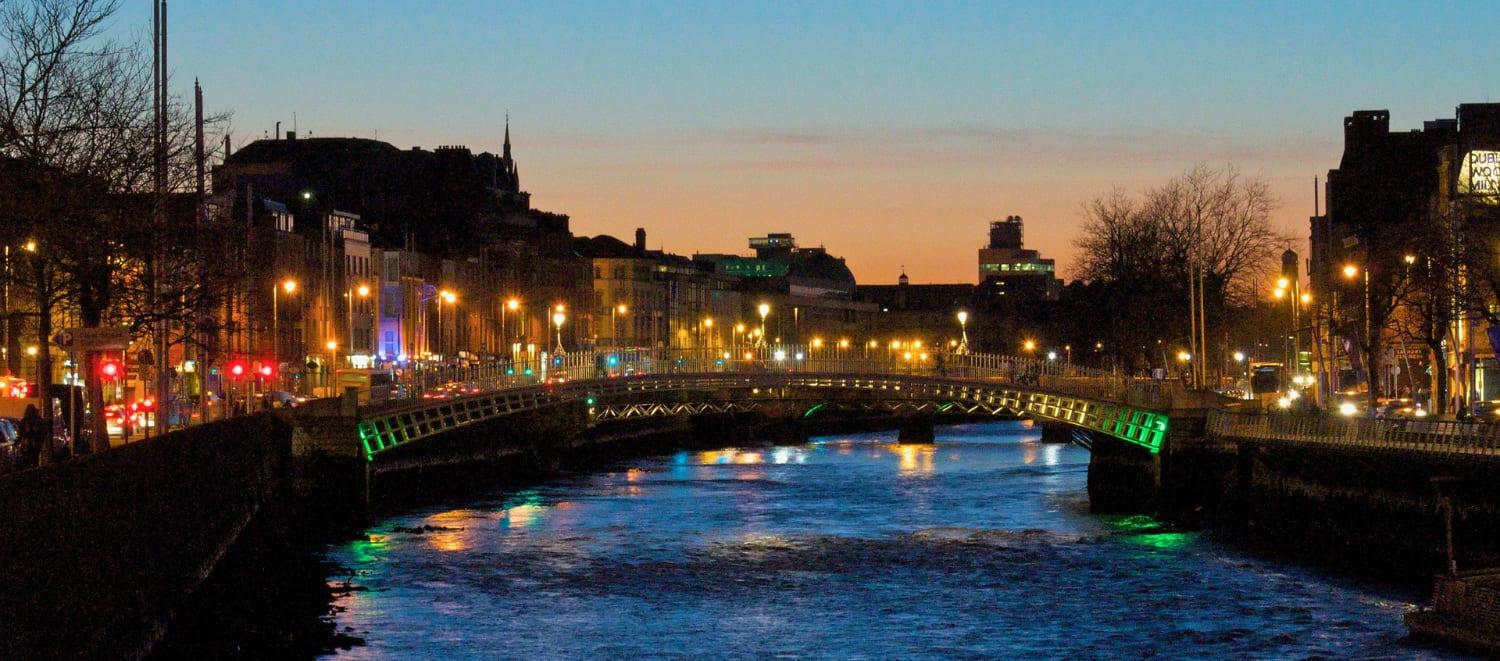The street we know today as Talbot Street emerged in the early 19th Century and it reflected the style and design of that time.
The Wide Street Commission was doing important work redesigning the centre of Dublin, it was shifting the city’s axis eastward and creating the broad boulevards that we know today like Dame Street, Westmoreland Street and D’Olier Street.
The Chief Commissioner was a man named John Beresford, who was brother-in-law to Luke Gardiner whose family owned huge tracts of land in the North of city. These lands, known as the Gardiner Estate, included the area of Talbot Street and the wider Gardiner family gave their name to many of the streets we know in the area today, such as Gardiner Street, Mountjoy Square, and Foley Street (formerly Montgomery Street), which infamously became known as the “Monto” red light district during the 19th and early 20th Centuries!

One of the earliest developers in the area was Henry Moore, the Earl of Drogheda, who in the late 17th Century developed the upper end of what we know today as O’Connell Street, as well as Henry Street and North Earl Street, modestly deciding to name all the streets after himself.
The earliest incarnation of Talbot Street was known as North Cope Street and had such lovely attractions as the Cow Pock Institution, which opened in 1804 to treat sufferers of Cow Pox. A fairly horrible contagious disease that could be transmitted from livestock to humans!
The more modern Talbot Street appears on William Duncan’s map from 1821 and the area sees some rapid development over the next few decades. In 1846 Connolly Train Station opened its doors (then known simply as Amiens Street Station). It was constructed for the Drogheda and Dublin Railway Company and was the first of the four major Dublin Railway stations to be built.
The commanding central tower of the station could be seen the length of Talbot Street as far down as O’Connell Street. This was followed with the prominent railway bridge that cuts across Talbot Street in 1891. The area became, over time, even more of a transport hub when the Busáras station opened on Store Street in 1953 and then in 2004 the Luas Red line started to run with stops on Lower Abbey Street, Store Street and at Connolly Station.
The area is now arguably the most well-connected area for transport in the country, which explains one of the reasons that it is so popular with visitors with a proliferation of hotels and backpacker hostels in the district such as the Ripley Court, Isaac’s Hostel and The Celtic Lodge.

While the area is well known as a key historic shopping area, with famous traditional Dublin names like Guiney’s, F.X. Buckley Butchers, O’Neill’s Shoes and many more, it is also home to quality restaurants like 101 Talbot and Le Bon Crubeen.
While around the corner is the world-renowned Abbey Theatre. The Abbey was the first state-subsidized theatre in the English-speaking world and played a central role in the cultural revival of the early 20th Century and many key moments in the early decades of the State.
Beyond the other boundary of Talbot Street on Marlborough Street lies St. Mary’s Pro Cathedral. Across the road from this are the fine, impressive grounds of the Department of Education, originally the site of the first stone-built mansion in Dublin, Tyrone House, which still stands there to this day. The Richard Cassells-designed building was purchased by the state in 1835 and is now home to the Model School and the Scoil Caoimhín Gaelscoil. All of this shows the often overlooked architectural gems that are dotted around the Talbot Street area. Sure, did you know that there was even a Welsh Language Church on the street!

During its history Talbot Street has been associated with a number of dramatic and tragic events from the death of Sean Tracey in a gun battle in front of what is now The Wooden Whisk café, while the street also witnessed one of the darkest days of the Troubles in 1974 – but the area has always bounced back.
Today Talbot Street is a link between the main transport hubs like Connolly Station, the IFSC and Docklands and with areas further west like Henry Street and Capel Street, while still retaining an appeal all its own. Of late we’ve profiled all the different places to dine in the area while several new companies have opened offices in the area bringing an influx of new workers and an extra vibrancy to the area.



